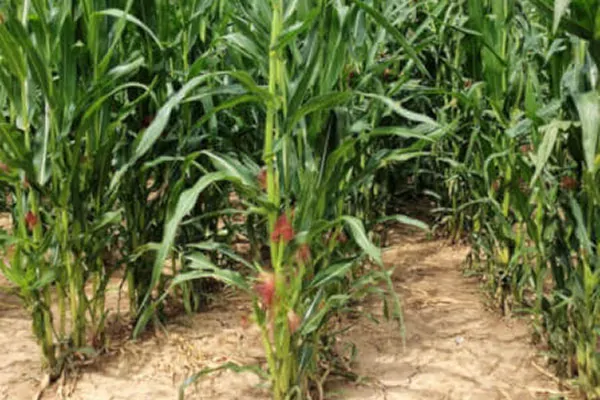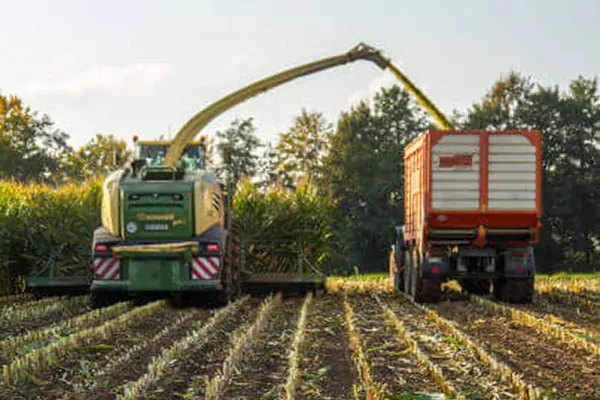Silage corn with drought-damage – what to do now?
Due to the highly unequal distribution of rainfall across different regions, many areas are affected by severe drought. In addition to the significantly lower growth on permanent pastures, corn grown for silage is also in poor condition in many areas. The lack of rainfall leads to a sharp decline in growth. Plants will start to overripen. In some cases entire fields have dried out.
Overripe corn stocks
Problem
No further cob growth is expected for crops that have dried out to such an extent. Instead, the plant continues to ripen or dry out, causing difficulties in subsequent compaction in the silo. Silos are very vulnerable to reheating and thus high feed losses. This makes an early harvest necessary. Although the energy content and feed value of the resulting corn silage is generally much lower than that of “normal” corn silage, the rest of the plant can at least increase the feed supply. As a result, the already scarce supply of basic feed is improved.

Recommended use of silage inoculants
To protect silages, we recommend the use of biological silage inoculants that are specific for these kind of situations in order to increase the stability of your silage through efficient and sustainable formation of acetic acid. By using these silage inoculants, further silage losses related to dry matter and reheating in the silo can be reduced. The silage remains fresh and stable longer and the development of yeasts and moulds is inhibited. Therefore the feed stays fresh, cool and hygienic in the feed alley.
Crops with well-developed cobs where the rest of the plant is green should continue to ripen and reach a higher starch content. As they continue to ripen, the ratio of the cob compared to the total plant shifts in favour of the cob, and at the same time the dry matter increases. This can lead to problems in the silo, especially during dry periods , as dry silage can only be moderately compacted. A high feed rate in combination with the use of a stabilising silage inoculant is strongly advised.
Corn crops with green plants but without cob development
In addition to the overripe corn crops, you can also notice crops still with green plants, but without cob development and stalks already showing red discolouration.
These should be harvested quickly. The plant is characterised by a high sugar content, which is stored in the plant to be displaced after the cob bears fruit.
Problem
On the one hand, there is a problem of silage effluent production due to the comparatively low dry matter content; on the other hand, the high content of easily soluble carbohydrates produces a very sensitive feed stock.

Recommended use of silage inoculants
For crops like these, we recommend the use of combinational biological silage inoculants which contain homofermentative lactic acid bacteria as well as heterofermentative lactic acid bacteria. The target should be to lower the pH and improve the stability through targeted formation of acetic acid. The resulting improved fermentation process and protection against reheating ensure the best possible feed mass of such critical crops in terms of both quantity and quality.
You might be interested in the following contents:
Contact & Service
Would you like detailed information or a consultation? The more precisely you specify what interests you, the better we can assist you. Are you interested in purchasing Josilac® silage inoculants? We are glad to put you in touch with our dealer near you. Just send us a message with your request.